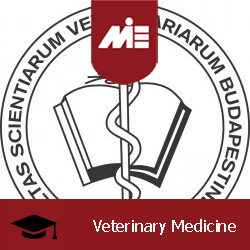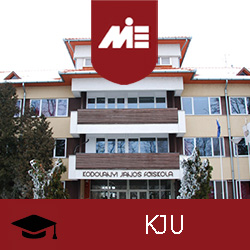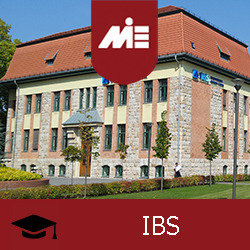in this Section you can Read the information about the University of Veterinary Medicine, courses and admission requirments of University of Veterinary Medicine
How is the University of Veterinary Medicine?
How do we introduce University of Veterinary Medicine?
Is the University of Veterinary Medicine a good and proper one for your target?
In this short text we will provide you some necessary information about the University of Veterinary Medicine whose main campus is Hungry.
Please note that this information is about our research about University of Veterinary Medicine,you may also research more about that and gain more data about it. This is only our research about University of Veterinary Medicine which presents our Idea and opinion so please for more information, we refer you to research more.
University of Veterinary Medicine whose link of web sight is mentioned here at the ending part of the page is one of our trusted academic institutes.
There is always international mixture of student atmosphere in their target and they try to provide proper and accepted educational services to students.
If you want to apply for this university, we recommend you to read this text first to know more about that, in fact we recommend research about any steps for your future.
In order to give you precise data about University of Veterinary Medicine , our staffs researched and mentioned some information exactly from the web page and flyers of the university it self.
Before we begin to give you more details about this university , we would like to emphasize our intention for being honest toward our customers ,so please note that ,if we some how mention some negative points beside positive pointes about the institutes in our our webpage , we do not mean to target any reputation but we just want to reflect our client’s opinion about institutes.
University of Veterinary Medicine was built in year 1787 in Budapest.
What is the ranking of University of Veterinary Medicine?
University of Veterinary Medicine is not included Word Ranking and is not rankedDepartment and Clinic of Equine Medicine
Department and Clinic of Food Animal Medicine
Department and Clinic of Internal Medicine
Department and Clinic of Reproduction
Department and Clinic of Surgery and Ophthalmology
Department Animal Breeding Nutrition and Laboratory Animal Science
Department of Anatomy an Histology
Department of Animal Breeding and Genetics
Department of Animal Hygiene, Herdhealth and Veterinary Ethology
Department of Animal Nutrition
Department of Biomathematics and Informatics
Department of Botany
Department of Chemistry
Department of Clinical Pathology and Oncology
Department of Ecology
Department of Exotic Animal and Wildlife Medicine
Department of Food Hygiene
Department of Foreign Languages
Department of Laboratory Animal Science
Department of Microbiology and Infectious Diseases
Department of Parasitology and Zoology
Department of Pathology
Department of Pharmacology and Toxicology
Department of Physical Education
Department Physiology and Biochemistry
Department of Veterinary Forensics, Law and Economics
Division of Biochemistry
Division of Immunoendocrinology and Radiosotopes
Division of Physiology
Experimental Farm
Hutyra Ferenc Library, Archives and Museum
Institute of Biology
Kemeny Armand Multimedia Laboratory
Agricultural Economics
Anaesthesia in the exotic animal Practice
Anatomy and physiology of exotic animals
Anatomy I
Anatomy II
Anatomy III
Andrology and assisted reproduction
Animal breeding
Animal health economics, management and ethics
Animal hygiene and herd health 1
Animal hygiene and herd health 2
رAnimal nutrition I
Animal nutrition II
Animal welfare
Animal welfare II
Applied clinicopathological diagnostics
Applied Ethology 1
Applied Ethology 2
Aquaculture Hygiene – Intensive Fish Culture
Avian and Exotics Animals Medicine
Basic Hungarian for International Students 1
Basic Hungarian for International Students 2
Basic Hungarian for International Students 3
Basic Hungarian for International Students 4
Basic Medical Latin
Basic Natural Sciences
Basics of clinical examination and clinical care
Biology
Biology and medicine of exotic birds
Biomathematics
Biophysics I
Botany – Lectures
Botany – Seminars
Breeding and nutrition of fur bred animals
Chemistry
Clinical (applied) endocrinology
Clinical Demonstrations
Clinical Diagnostics
Clinical Hungarian 1
Clinical Hungarian 2
Companion Animal Dietetics
Data analysis practicals
Dermatology of digs and cats
Detailed surgery I
Detailed Surgery II
Ecology and hygiene of game meat production
Epidemiology, infectious diseases I
Epidemiology, infectious diseases II
Exotic mammal medicine
Fish diseases
Food hygiene I
Food hygiene II
Forensic Animal Genetics
Forensic Veterinary Medicine
Fundamentals of hunting
Fundamentals of scientific writing
Game breeding and nutrition
Game management
Histology 1
Histology 2
Histopathology
History of veterinary medicine
Honey bee diseases 2
Horse Breeding
Hot Topic of Human Nutrition
Hunting guns and ballistics
Incubation of poultry eggs
Informatics
Internal Medicine 1
Internal Medicine 2
Internal Medicine 3
Laboratory Animal Science and Bioethical
Laboratory Diagnosis of Infectious Diseases
Laboratory diagnostics
Library informatics
Medical aspects of the equine gastrointestinal diseases
Modern Dog and Cat Breeding
Modern Materials in Life Science
Mycology
Obstetrics and Reproduction 1
Obstetrics and Reproduction 2
Obstetrics and Reproduction 3
Ophthalmology
Organic animal production
Paleophysiology
Parasitic zoonoses
Parasitology 1
Parasitology 2
Pathology I. – General Pathology
Pathology II. – Mammalian pathology topics 1-35.
Pathology III. – Poultry pathology
Pathology IV. – Mammalian Pathology (36-100. topics)
Pet fish diseases
Pharmacotherapy
Physical Education
Poisonous garden and indoor plants
Psychopharmacology: drug therapy of behavioral disorders and other psychological disturbances
Rabbits and rodent dentistry
Radiology – Anesthesiology – General surgery
Reproductive Pathology of Large Animals
Reptile medicine
Risk analysis of food safety
Selected Chapters of human anatomy
Sportpharmacology
State Veterinary Medicine
State Veterinary Medicine 2
State Veterinary Medicine Practice
Stem cells: prospects of animal transplantation
Summer clinical practice
The horse in the farrier’s view
Topographic & Applied Anatomy
Trophy evaluation and management
Ultrasound-diagnostics in dogs and cats
Veterinary and Food Chemistry
Veterinary bacteriology
Veterinary biochemistry I
Veterinary biochemistry II
Veterinary companion animal clinical oncology, diagnostics and therapy
Veterinary comparative pharmacokinetics and drug metabolism
Veterinary Genetics
Veterinary immunology
Veterinary Pathophysiology
Veterinary Pharmacology 1
Veterinary Pharmacology 2
Veterinary physiology I
Veterinary physiology II
Veterinary Profession
Veterinary Toxicology
Veterinary virology
Wildlife ecology
Wildlife health
Wildlife zoology
Zoo and Wild Animals Medicine
ZoologyStudents can start their course in University of Veterinary Medicine at september and januaryPayable
When admitted a deposit of EUR 800 should be paid in order to ensure your place within some three weeks (Failing to send the required deposit before the deadline will result in loosing the offered place.) For students in the regular course of their studies registration for semester 2–11 does not require a deposit payment. The semesters tuition fee, however, has to be paid in full before registering to a semester.
Before August 20th the payment should be completed to a total of EUR 6,780 (1st term tuition fee without registration fee)
Second term tuition is payable in January EUR 4,200
Fee for 11th (practical) semester EUR 5,490
Additional fees
Application fee EUR 200
(payable to the local representative or the veterinary school when submitting your application, non-refundable)
Entrance examination fee: EUR 250
If the exam is taken in Hungary.
Registration fee EUR 220
(payable once during your studies, together with the 1st semester tuition fee: before August 20)The dormitory – available to Hungarian and some ERASMUS-students – is situated in a suburban district. The four-storey building has a courtyard with one sports field, and a park. The present building named after a renowned veterinarian was built in 1972 with the help of the university’s students. The dormitory is managed by the director and a student committee of seven students according to the house rules of the dormitory. The seven students are elected by the residents of the dorm.
The three-bedded rooms have their own bathrooms and a balcony, and are very comfortable. Internet connection is also available in each room (3 lines). Also, there is one room for cooking and one for learning on each floor. The facility includes a computer room, a small gym, a buffet in the main hall, and a foyer equipped with a soccer and a pool table.Secondary School Leaving Certification from an accredited secondary school. The school leaving certificate is a necessary prerequisite for starting the studies. Those who are in the last year of their secondary school studies by the application deadline can also apply but only with the obligation to produce their certifications before registration to the University.
Curriculum Vitae in English.
Medical Certificate: Certification of physical and mental capability of the applicant issued by a general practitioner.
Signed Photographs. Three passport size photos – please, indicate your name on the rear.
Copy of Passport with your personal data.
Letters of Recommendation are welcome. Letters in English from secondary school principal or science instructors are preferred. Particularly valuable are letters of recommendation from persons who studied at or graduated from our school.








Leave a Reply
Want to join the discussion?Feel free to contribute!